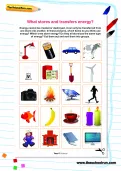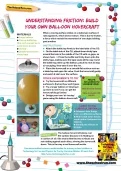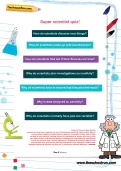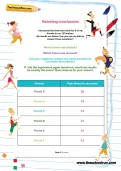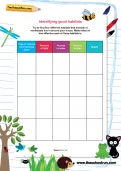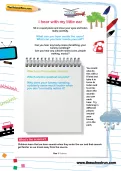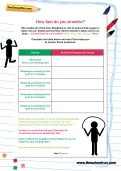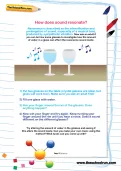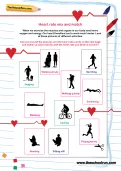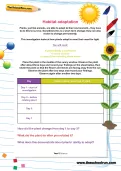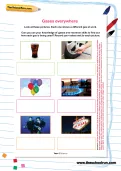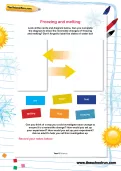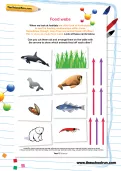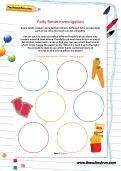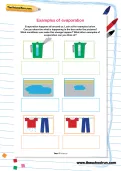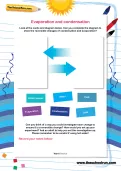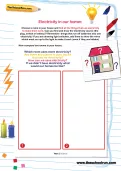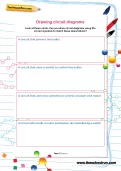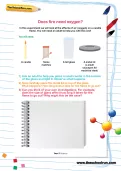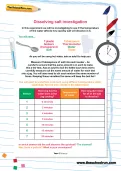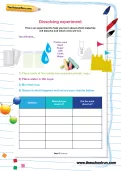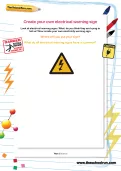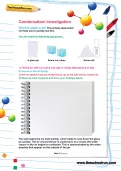Try to find four different habitats that animals or minibeasts live in around your house. Make notes on how effective each of these habitats is.
or
Register to add to your saved resources
Already a subscriber? to view this content.
Sit in a quiet place and close your eyes and listen really carefully. What can you hear inside the room? What can you hear inside yourself? Record the sounds you hear.
or
Register to add to your saved resources
We breathe all of the time. Breathing is vital to ensure that oxygen is taken into our bodies and harmful carbon dioxide is taken out of our body… but how fast do we breathe? When does this change? Why? Complete the table and see if this helps you to answer these questions.
or
Register to add to your saved resources
Already a subscriber? to view this content.
Resonance is described as the intensification and prolongation of sound, especially of a musical tone, produced by sympathetic vibration. Now ask an adult if you can borrow some glasses to investigate how the amount of water in a glass can affect the resonance sound made.
or
Register to add to your saved resources
Already a subscriber? to view this content.
When we exercise the muscles and organs in our body need more oxygen and energy. Our heart therefore has to work much harder. Look at these pictures of different activities. Can you cut out the pictures and the heart rate cards and match up each activity with the heart rate you think is correct?
or
Register to add to your saved resources
Already a subscriber? to view this content.
Plants, just like animals, are able to adapt to their environment – they have to do this to survive. Sometimes this is a short-term change; they can also evolve to change permanently. This investigation looks at how plants adapt to meet their need for light.
or
Register to add to your saved resources
Already a subscriber? to view this content.
Can you use your knowledge of gases and research skills to find out how each gas is being used? Record your notes next to each picture.
or
Register to add to your saved resources
Already a subscriber? to view this content.
Look at the cards and diagram. Can you complete the diagram to show the reversible changes of freezing and melting? Don’t forget to label the states of water too!
or
Register to add to your saved resources
Already a subscriber? to view this content.
When we look at habitats we often look at food chains to see the feeding relationships within them. Sometimes, though, more than one animal feeds off others. This is when we make food webs. Look at these cards. Can you cut them out and arrange them on the table with the arrows to show which animals feed off each other?
or
Register to add to your saved resources
Ask an adult to help you conduct this simple experiment into reversible and irreversible changes. Heat each of these food items and see if the change is reversible or irreversible when the item cools.
or
Register to add to your saved resources
Already a subscriber? to view this content.
Ask an adult to help you select different foods that you think may contain more fat than others. Carefully rub each food in turn in one of the circles. Label each circle so that you can see which food was in which circle. Leave the paper to dry. When dry hold it up to the light. You should be able to see which foods contained more oil and fat as this will be left on the paper!
or
Register to add to your saved resources
Already a subscriber? to view this content.
Evaporation happens all around us. Can you describe what is happening in these pictures? What conditions can make this change happen? What other examples of evaporation can you think of?
or
Register to add to your saved resources
Already a subscriber? to view this content.
Look at the cards and diagram. Can you complete the diagram to show the reversible changes of condensation and evaporation?
or
Register to add to your saved resources
Already a subscriber? to view this content.
Choose a room in your house and find all the things that use electricity to make them work. Can you find and draw the electricity source (the plug, switch or battery)? Remember: things that run off batteries also use electricity! If you are drawing light switches, add lines to show the wires which must run up to the light to make it work (even if they are hidden)
or
Register to add to your saved resources
Already a subscriber? to view this content.
Look at these cards. Can you draw circuit diagrams using the correct symbols to match these descriptions?
or
Register to add to your saved resources
Already a subscriber? to view this content.
In this experiment we will look at the effects of air (oxygen) on a candle flame. You will need an adult to help you with this one!
or
Register to add to your saved resources
Already a subscriber? to view this content.
In this experiment we will be investigating to see if the temperature of the water affects how quickly salt will dissolve in it.
or
Register to add to your saved resources
Already a subscriber? to view this content.
This is an experiment to help you learn about which materials will dissolve and which ones will not.
or
Register to add to your saved resources
Already a subscriber? to view this content.
Look at electrical warning signs. What do you think they are trying to tell us? Now create your own electricity warning sign.
or
Register to add to your saved resources
Already a subscriber? to view this content.
There is water in air! This simple experiment will help you to quickly see this.
or
Register to add to your saved resources
Already a subscriber? to view this content.
